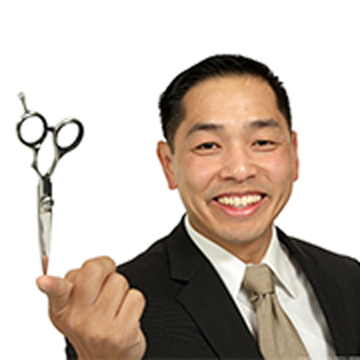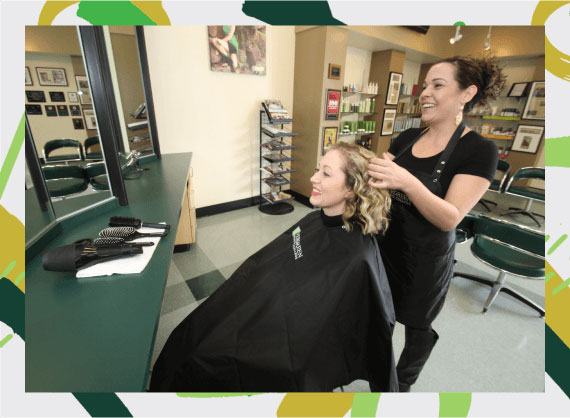Master Esthetics Washington State – Possible Problems
There was an article that was published last week on www.SkinInc.com by Suzanne Warfield entitled Viewpoint: Esthetician Legislation: Be Careful What You Wish For. It was an interesting perspective on the challenges that may be encountered with the upcoming laws for the Washington State Master Esthetic License. It’s not a popular or easy perspective to read, because it’s very real regarding the challenges that may incur.
The first step to solving any challenge is to correctly identify the problem. Suzanne offer her perspective. What I would like to ask is your perspective?
Below is Suzanne’s article:
By: Susanne S. Warfield
Posted: July 12, 2013, from the July 2013 issue of Skin Inc. magazine.
Recent legislation may have estheticians thinking they have won the war, but in reality, they may have lost the battle for advancing the esthetic profession and supporting estheticians moving state-to-state. Passing a bill for 1200-hours of esthetician training is what estheticians want—but there are important cautionary considerations when authoring bills and entering into the legislative arena.
According to the United States Census Bureau data, 60% of 25–44 year-olds will leave their state of birth to move to a different part of the country. So what does that mean to you? If you went to esthetic school and obtained your esthetician license—it may not be transferrable if you move to another state.
The idea of a “job for life” is fast becoming a thing of the past, due to restrictive licensing requirements. When an esthetician leaves one state, they may be faced with difficult obstacles in getting an esthetician license in the state they now reside. Salons and spas that employ estheticians will be impacted as well—especially if their business crosses state lines. The burden of bad legislation, will lead to higher job losses within the esthetic profession and create a job shortage.
New laws that require an esthetician to have medical supervision to perform certain job tasks, not only reduces professional independence, but it decreases small business ownership by estheticians—mostly women. In over 30 states, an esthetician cannot own a skin care facility and employ a physician to supervise procedures due to what is called the Corporate Practice of Medicine. So why are estheticians allowing for their licensed profession to be restricted to working under medical supervision? How long will it be before the physicians employ unlicensed medical assistants to provide services that were formerly provided by the licensed estheticians? Why pay a licensed esthetician $30 an hour—when a medical practice can hire an assistant for $12 or less?
National organizations represent professions and industries as a whole to provide a uniform standard, regardless of state or special interest groups. The American National Standards Institutes is a standard setting organization that brings interested parties together for the development of products, services, process, and systems in the United States. The National Interstate Council of State Boards of Cosmetology represents state regulatory boards in all of the beauty professions, and founded the principal of national testing—to ensure that an esthetician in California has the same competency testing standards of an esthetician in New Jersey. Coalitions serve in the same way by bringing interested parties together for a joint mission or cause. The National Coalition of Estheticians, Manufacturers/Distributors & Associations has been setting national esthetician job task standards for esthetician licensees in the United States since 2000.
The other casualty of poorly researched legislation will be the schools that teach the esthetic student. Education reform has been around in the United States since the 1980s and is driven by standards and accountability. What should an esthetician know and be able to do when they graduate from esthetic school? Established national standards or job tasks clearly define what the esthetician should be able to do by using a curriculum framework that outlines the specific knowledge or skills the student should have in order to receive a diploma. If one state enacts legislation that is not within an existing national standard, it is the school that is financially impacted. Implementation will include, but is not limited to providing additional teacher education, additional textbooks, additional products and additional equipment needed to provide required practical experience, and medical staff to meet the medical supervision clause, is state-required.
Additional training requirements for teachers already licensed could mean fewer teachers staying in the profession. Providers of training for esthetic teachers, such as NCEA’s National Esthetic Teacher Training and the American Association of Cosmetology Schools‘ Career Educators Alliance have both stepped up to provide training programs. The recession has impacted schools’ budgets and their ability to provide teachers with continuing education. Schools are already feeling the crunch of lower enrollments and now will face further financial issues of funding and having to meet new statues and rules.
Then there are the student considerations. In order for a school to apply for government funding, they need time to write the curriculum and submit for approval to an accreditation agency. If a new school is applying for the first time, the wait can extend beyond two years. Even after receiving accreditation approval there will be additional time restrictions before funding is made available for prospective students of the new program. Without government loans, many students would not be able to enroll in the esthetician program.
Know the issues.
- Before writing a bill, ensure that the bill and all of its components are within a legal framework of that state. Example: Corporate Practice of Medicine laws.
- Do not overstate your credentials and or what they represent or their equivalency. Example: Comparative Analysis—Are all esthetic credentials created equal? by Helen Lawrence.
- Research the opposition and know their position.
- Research the impact of bill on schools. Contact the national organizations that represent schools such as the American Association of Cosmetology Schools and Association of Private Sector Colleges and Universities.
- Understand all the esthetic issues—from current state issues to national testing.
- Always leave yourself an out and don’t box the profession into a corner—use language to provide a review of statutes as well as provide title or practice protection. Tiered licensing may make sense legislatively, but does it really protect the consumer or cause more confusion? The safety of consumers is why estheticians are licensed in the United States. In over 30 states, a cosmetologist can still perform skin care services under their scope of practice. Add in a two-tiered esthetician licensin—that now brings the total to three different licenses that can work on the consumer performing skin care.
A consumer most definitely does not know to ask prior to signing a consent form: Are you a cosmetologist? Are you a Basic Esthetician? Or are you a Master Esthetician? The concept of “caveat emptor” or “buyer beware” was considered an unsound motto, but clearly how can the consumer of services be sufficiently informed as to what each of these three levels of licensees are able to do? Association of Test Publishers provides a clear definition: “The purpose of licensure is to protect the health, safety and welfare of the consumer public.”
Continuing education is key to stay competitive in business and the esthetic profession. Constantly updating and honing skills is how an esthetician can keep up with the changing scientific and technological advancements, new laws and other industry developments.
Having national standards and substantial equivalency is a rationale that better serves esthetician licensees and support mobility of the licensee state-to-state. As more states and estheticians look to become advocates for their profession, don’t forget to do your research and know the facts but most important–think of the impact on the rest of the profession.
Susanne S. Warfield is president/CEO of Paramedical Consultants, Inc., a consulting, publishing and association management firm. She is a New York state-licensed esthetician, is NCEA Certified, holds both CIDESCO and ITEC diplomas and worked for more than 13 years in a dermatology practice. She has authored more than 450 articles, and 15 books for the consumer, medical and skin care sectors. Warfield served on the American Academy of Dermatology’s (AAD) Allied Health Committee, and currently serves as the executive director of the Society of Dermatology Skin Care Specialists (SDSS) and the National Coalition of Estheticians, Manufacturers/Distributors & Associations (NCEA).
Schedule an appointment to tour our campus and meet and speak with our instructors.





